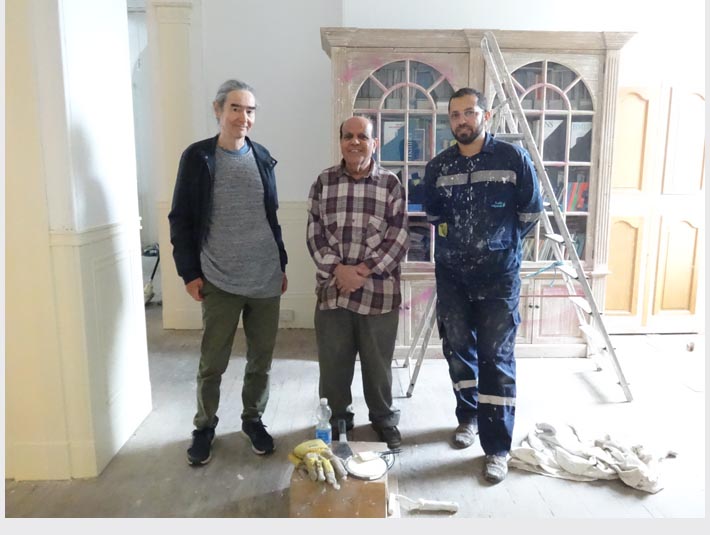Canwick is a tiny village of 300 people that rests on the limestone escarpement south of Lincoln. Sometimes of a summer evening I cycle up there and take a breather at the far end, on the bench positioned beneath plane trees facing the stone mansion of Canwick Hall. It's quite an ascent up Canwick Hill to that village and only achievable by me without having to get off and walk part of the way is when I have all 18 gears working and haven't had a particularly fatiguing day at work prior. It's a very peaceful spot to aim for.
From even my modest bit of research I now know that Canwick Hall, along with the surrounding 250-300 acres, was once home to the wealthy Sibthorpe family for over two centuries, from 1730 - 1939. Subsequently the estate was purchased by Jesus College, Oxford and, curiously, a British resistance unit was briefly established there, in 1940, with invasion seemingly imminent.
While there have been occasional signs that one or two people may have been living in parts of the building in recent years - a sash window partly left open a little or a flowerpot perched on a sill - there has never really a sense of it being properly occupied. It always seem to be waiting.
Which is why in my imagination I always made good with a scene of ladies and their consorts spilling out attired in Regency finery, warm from dancing, conversing and flirting and vin, making good their adieus from the Hall to be drawn away in carriages. A world of spirits easily conjured in the evening light, transparent, voiceless, but busy with their excitements, hopes, emotions.
And as for the above photos actually of the interior of the building? I was walking by there on an overcast, damp Sunday morning recently when I saw two people sat on the steps beneath the portico and fluted columns and on impulse went to say hello. I met Maz, a semi-retired heart specialist who owns the house, and his friend Abdul, who were taking a time-out from decorating.
As it probably became clear to them (and me) pretty quickly, that their polite response wasn't going to be sufficient, and through force of will I was graciously permitted inside to see something of the mystery of this hidden world. I'm not usually that pushy! This was clearly a privilege. Should Maz decide to have an open day people would come from afar.
He was quietly spoken and a restful person to be with. No spectres from the past would be perturbed by his presence. It turns out he had bought the property after hearing from a local that it was for sale in 2015 and had bought it on a whim. Taking on such a challenge as a non-professional developer I had a feeling he probably looked 20 years younger back then and he might need a heart specialist himself by now.
While the grand structure inside was impressive the administrators who he had purchased from had sold off pretty much any fitting that could be removed prior. Fireplaces, shutters, baths, sinks, kitchens, were all gone and it had become an unloved shell.
I can only imagine the strain, financial and otherwise, dealing with more significant challenges, such as the poor condition of the roof and the necessity to replace huge beams damaged by water ingress. The cellar, very chill, was now the temporary repository of some huge pieces of aged timbers. That cellar consisted of several rooms that had once been larders and a (massive) wine store. A large grate was in position over a well with water still glimmering in the dark below.
As for the surrounding Canwick village, it has a small community feel. It is replete with village hall with posters for clubs and events. An iconic red telephone box stands outside, now used as for book swaps, and there is a large playing field used by an archery club.
The requisite village church is All Saints. Saxons originally built upon the tesselated pavement of a Roman villa, and this was re-made after the Norman conquest. It is here that generations of the Sibthorp family lie. And to borrow those poignant final words from George Eliot's 'Middlemarch', they too now rest in 'unvisited tombs'.





